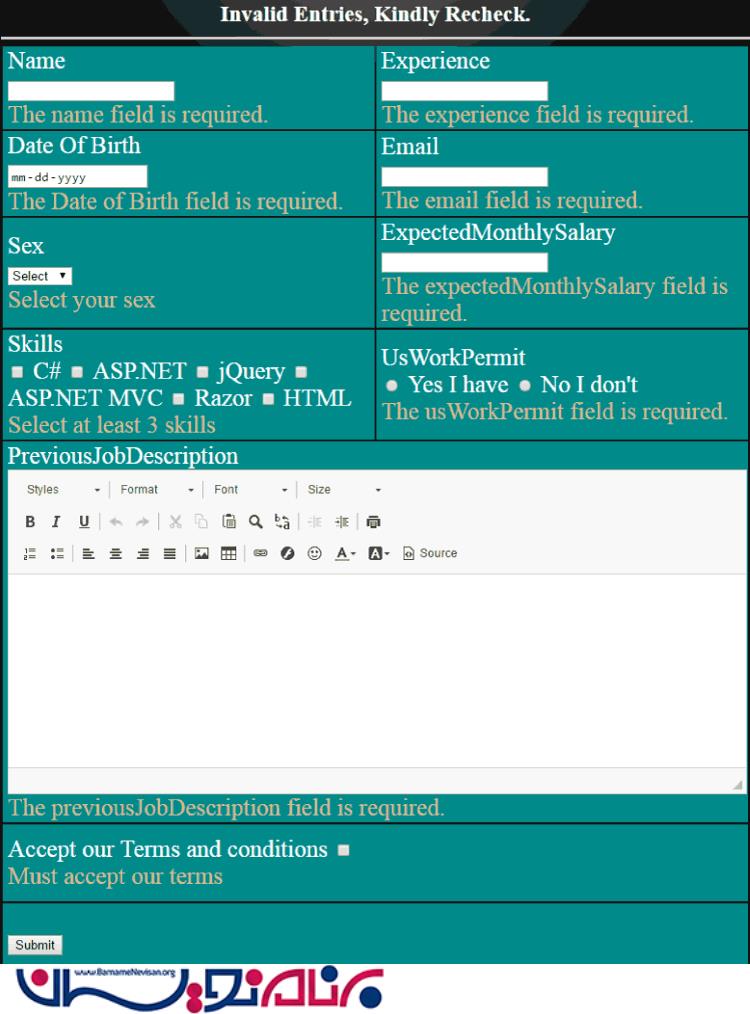

I selected Add MVC 5 Controller with views, using Entity Framework, selected my Model Class, Data context class, and left Generate Views, Reference script libraries. DisplayName ('Ruling Request ID') and ScaffoldColumn (false). I added data annotations to my Model classes, e.g.
#Mvc net data annotations code#
Regarding validation - the build-in templates provide it, but if you were to use a custom datatype in your custom display/editor template you would have to provide that yourself. The advantage of using the Data Annotation validators is that they enable you to perform validation simply by adding one or more attributes such as the Required or StringLength attribute to a class property. I created a MVC project using Code First From A Database. For example I would use a DataType.Currency on a price and a UIHint on a - say - custom slider ui control model property. The effect of applying a DataType attribute is pretty much the same as if applying the UIHint attribute, but it's a bit more explicit. If it doesn't fine one it uses a built-in one if available. All that it does is look for a view with that name (pre-defined or not) in the Views/ControllerName/EditorTemplates/.cshtml when you use Editor/EditorFor or Display/DisplayFor accordingly (it will also search in Views/Shared/.). As you have noticed it provides an enumeration of supported data types for which ASP.NET MVC internally provides editor and display templates (MultilineText -> textarea html input), but it can also take a string parameter with a custom type name.

I’ll demonstrate Code First DataAnnotations with a simple pair of classes: Blog and Post. NET applications, such as ASP.NET MVC which allows these applications to leverage the same annotations for client-side validations. The DataType attribute in the context of ASP.NET MVC is more or less a hint of what view template to use for rendering a display and editor for that property. DataAnnotations are also understood by a number of.


 0 kommentar(er)
0 kommentar(er)
